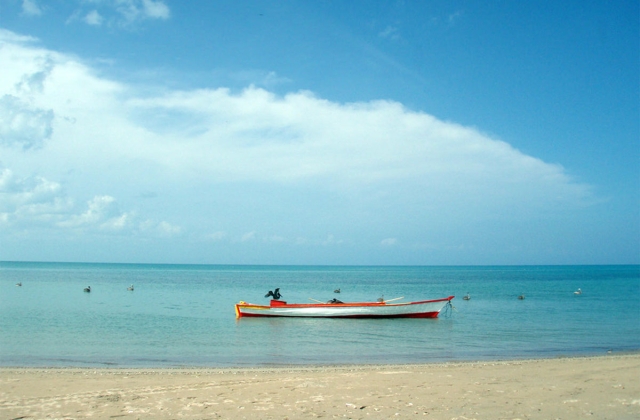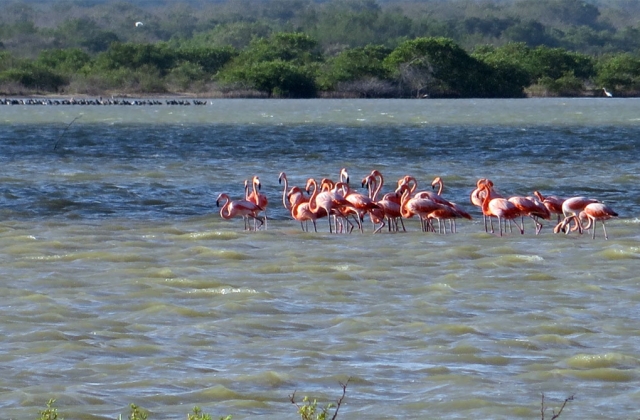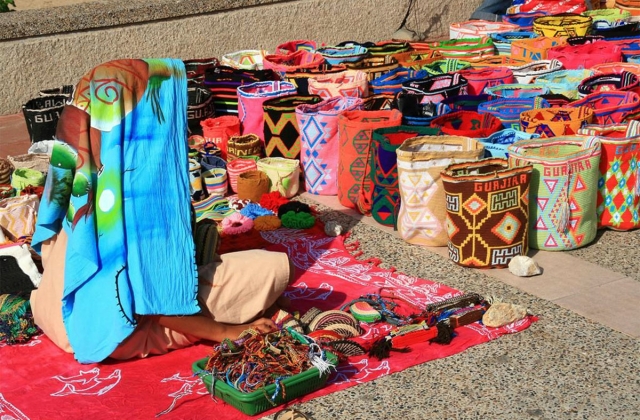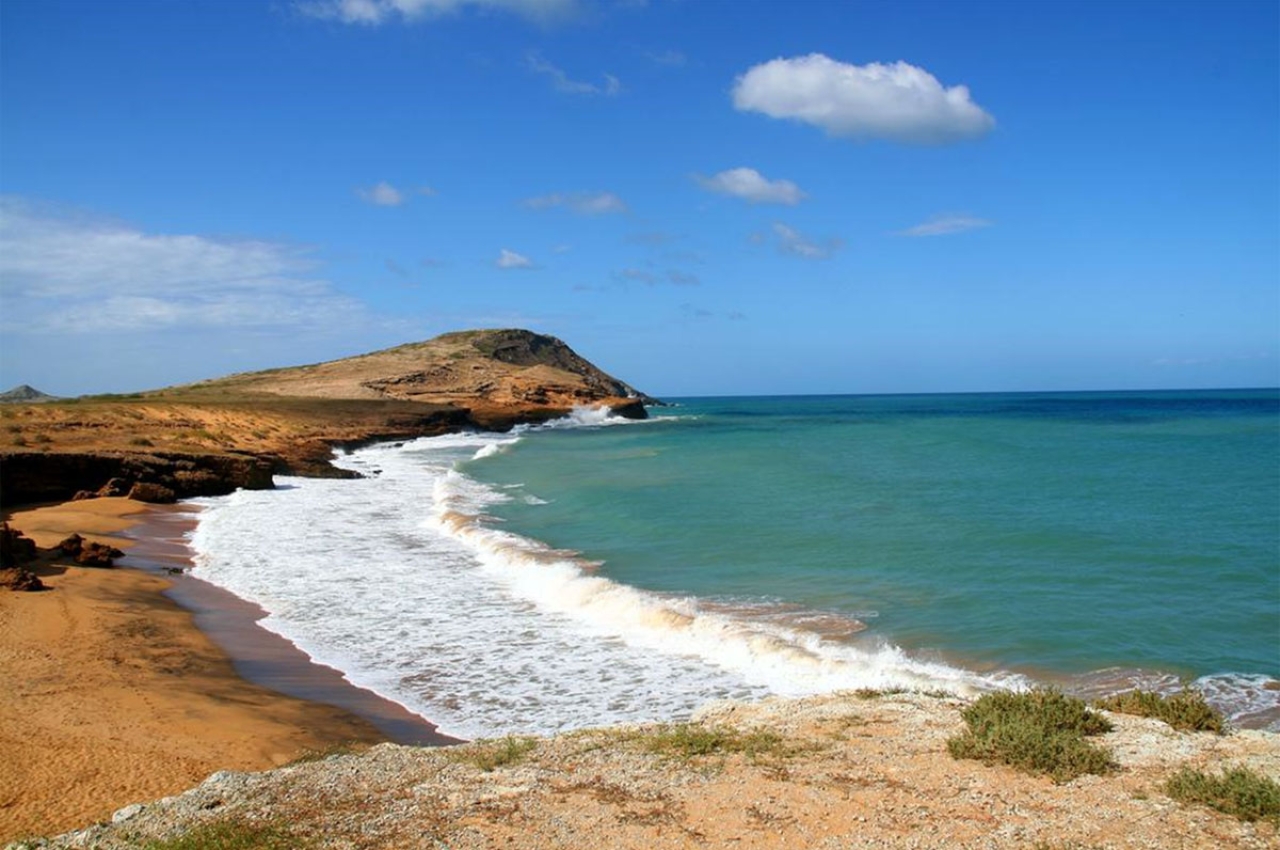Cabo de la Vela is a stunning stretch of shoreline in the northern coast of Colombia and is one of the highlights in Uncharted Colombia's La Guajira adventure tour. Its enchanting views and coastal delights are only available to the adventurer willing to travel off the beaten path; access to the region is by dirt road and more than two hours off the main highway. But for those who make the journey, the magic of the desert landscape and Caribbean sea weave their spell, and create a lasting impression.
 photo by Discover Colombia (via Flickr)
photo by Discover Colombia (via Flickr)
 photo by Luis Perez (via Flickr)
photo by Luis Perez (via Flickr)
Colonial discovery
Juan de la Cosa, a Spanish Explorer, discovered the cape in 1499. His landing was the first of any Europeans on the South American mainland. He named it Cabo de la Vela, which means the "cape of sails" in Spanish. It is said that the explorers saw the curves of the desert terrain and bluffs, which reminded them of a sailboat. More likely, the Spanish were just in love with sailing and found it a romantic name. In 1537, a settlement was founded by Nikolaus Federmann, called "Nuestra Señora Santa Maria de los Remedios del Cabo de la Vela." Continuous skirmishes with the native Arawak people (ancestors of the modern-day Wayuu), over pearl hunting caused the settlement to move to Riohacha in 1544, but a small adjacent village remains.
Sacred space
The Wayuu people still inhabit the region, and across the border into Venezuela. For them, Cabo de la Vela, or as they call it, "Jepirra", is a sacred space. They believe the it is a gate to the afterlife, and the place where their souls of the dead travel to be with their ancestors. However, the Wayuu are generally very friendly to travelers in the region, and they depend on income from tourism, through selling their beautiful mochilas and hammocks, and offering traditional cuisine, like friche (a goat dish). Pilon de Azucar is an especially sacred place for them, so tourists who choose to visit the area should do so with the utmost respect. The climb up Pilon de Azucar takes around 15 minutes and provides amazing views of the sea.
 photo by Tanenhaus (via Flickr)
photo by Tanenhaus (via Flickr)
Mild Caribbean seas
Cabo de la Vela's desert paradise offers gentle waves, warm water, soft sandy beaches, and breezes that keep the heat from being overbearing. Travelers can get a bite to eat in the small fishing village, usually fried fish (but if you are lucky, you might find fresh lobster), with coconut rice, and a cold cerveza. The gentleness of this coastline makes it the perfect place for a swim, and you might even find an umbrella or two out on the beach ready for you. The region is also famous for kite surfing, another fitting purpose for the name "cape of sails."
Rich experiences
While not a giant tourist mecca, you will find little shops and unique artisan crafts, like the mochilas. Visiting La Guajira is about allowing travelers to immerse themselves in the natural beauty of Colombia's northern coast. Macuira National Park is in the same region, and there are also saline lagoons, mudflats, and the largest population of American Flamingos to visit and explore.
Discover Cabo de la Vela and other nearby destinations on Uncharted Earth's La Guajira tour. Colombia is waiting.

 photo by Tanenhaus (via Flickr)
photo by Tanenhaus (via Flickr)